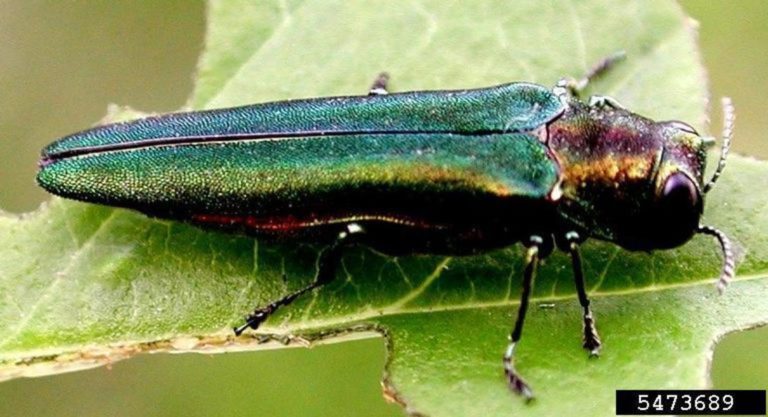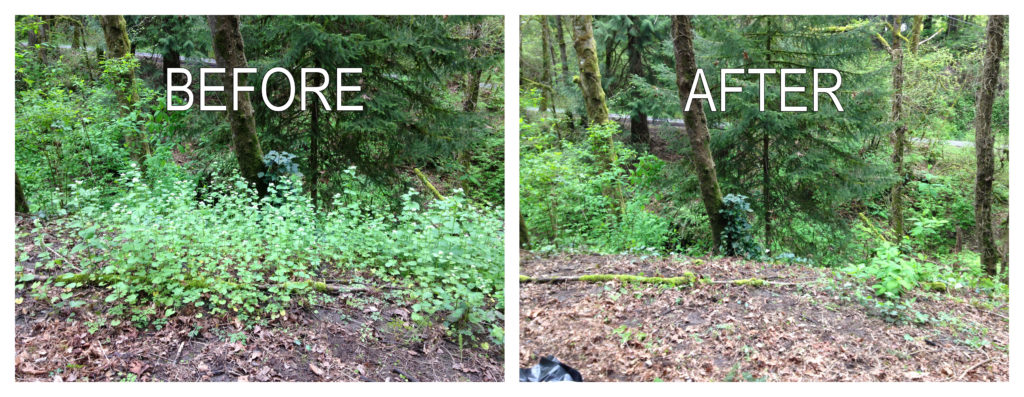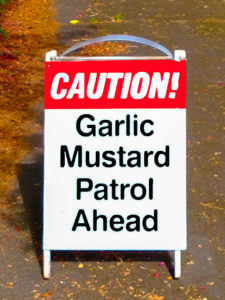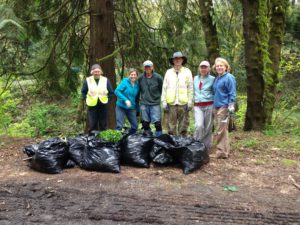Emerald Ash Borer (EAB)
The Emerald ash borer (EAB) is an invasive beetle responsible for the loss of 100 million ash trees since its arrival in the US. The first observance of EAB on the west coast occurred on June 30, 2022, in Forest Grove, Oregon. Urban Forestry staff at the City of Portland are participating in a statewide task force and taking other steps to monitor and prepare for its arrival and spread. The City will be alerted once emerald ash borer arrives. However, you can help keep an eye out and monitor our local ash (Fraxinus spp.) trees using Urban Forestry’s new, interactive map.

High Priority Invasive Plants
Arnold Creek neighbors are using various methods to control high-priority invasive plants. What method worked for you and what method failed? Contact us and share your experience. Help guide development of recommended approaches shared below.
Garlic Mustard
Garlic Mustard is an agressive, invasive plant that appeared along roads in Arnold Creek over a decade ago. Each spring, neighbors diligently clear the patches that pop up on roadsides so the City doesn’t need to use chemical sprays.
Pull garlic mustard and dispose in your trash bin, not in your compost.


Join the Garlic Mustard Team
Thanks to local business Buzz White Screenprint, for donating caution signs that help keep volunteers safe when working near roadsides.
Contact us for help removing Garlic Mustard from your property or to join the Garlic Mustard Team.
Lesser Celandine
STOP THE SPREAD!!!
Resources
Garbage, Recycling and Compost
What to do with your garbage, recycling, and compost.
Community Cleanups
Litter and graffiti cleanups. Where to report overflowing trash in public areas, abandoned vehicles or shopping carts.
West Multnomah Soil & Water CD
- Information and assistance on invasive weeds, native plants and financial assistance.
- Free treatment of Early Detection Rapid Response (EDRR) weeds on your property. Garlic Mustard, Japanese Knotweed and Lesser Celandine are EDRR noxious weeds.
Tryon Creek Watershed Council
Arnold Creek residents may be elidgible to receive services from Tryon Creek Watershed Council.
- Restoration project assistance – applying for grants and project management for individual and adjacent landowners.
- Watershed 101 workshop for groups, includes education and a hands-on work party.
Westside Watershed Resource Center
Inspires awareness and action on behalf of watershed health for Portland’s westside.
- Tool Loan
- Stormwater Stars hands-on learning workshops in partnership with West Multnomah Soil & Water Conservation District
- NativePlantSwap.org website to give or get free native plants and advice from your neighbors
4-County Cooperative Weed Management Area
The Clackamas/Clark/Multnomah/Washington County Cooperative Weed Management Area (4-County CWMA) is a partnership of organizations, agencies and non-profits dedicated to combating invasive weeds across the region.
Japanese Knotweed (pdf)
English Ivy (pdf)
Backyard Habitats
A unique program that supports urban gardeners in their efforts to create natural backyard habitats.
For sites smaller than one acre. A technician will assess your property, help you plan, and provide discounts for plants and materials. A collaborative effort of the Audubon Society of Portland and the Columbia Land Trust.


